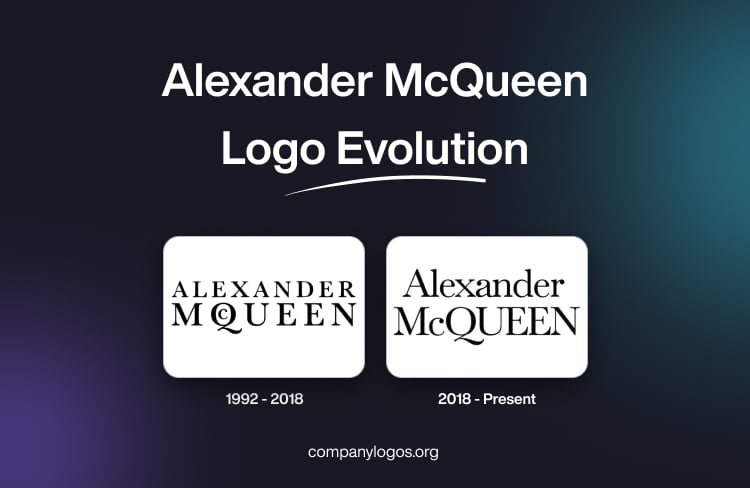
When it comes to luxury and innovation, very few brands can raise a toast to Alexander McQueen. This British fashion designer (1969–2010) was a visionary whose bold creativity, flawless tailoring, and theatrical runway shows revolutionised the fashion industry. Founded in 1992, McQueen is often referred to as the “enfant terrible” or “bad boy” of fashion. He seamlessly fused traditional craftsmanship with dark romanticism, technology, and avant-garde artistry. This fashion house specialised in men’s and women’s clothing, shoes, perfumes, and accessories.
Alexander McQueen rose from humble beginnings on Savile Row to become the head designer at Givenchy and later founded his globally renowned label. He pushed boundaries with designs that were provocative, emotional, and unforgettable. His legacy continues to influence contemporary fashion and has established him as one of the most influential and innovative designers of the modern era. As we delve into the history and evolution of its emblematic insignia, or logo, we reflect on the creative genius of its founder, Lee Alexander McQueen, among other details.
The Genesis of the Alexander McQueen Logo (1992 – 2018)
The journey of the Alexander McQueen logo began in the early 1990s, when the brand was founded by the British fashion designer Lee Alexander McQueen. The original logo was marked by a simple yet powerful design featuring the brand name in a sleek, uppercase font.
It featured the brand name in black uppercase in two levels. A distinctive characteristic of this logo was the letter “c” inscribed within the bigger letter “Q”. Further, the size of the first name “ALEXANDER” was considerably smaller than the surname “MCQUEEN” to achieve balance and create a sense of unity.

(2018 – Present)
The logo was tweaked in 2018, eight years after the passing of its founder. It differs from the previous version and reflects the changing dynamics of the fashion industry. In this iteration, the first name “Alexander” is written in a title case to convey a soft and modern impression.
The surname “McQUEEN” is written in a larger size, and all letters are in uppercase, except “c”. The placement of the letter “C,” unlike in the previous iteration, symbolises the new path chartered by the brand. The letters “U” and “E” in the surname have their serifs joined at the top. Overall, the logo continues with its creative legacy and yet maintains a modern appearance.

The Elements of the Alexander McQueen Logo
Font
The logotype uses a traditional custom serif typeface with classic proportions. Similar typefaces to this one are Baskerville Nr 1SH or Song ASC Traditional Light.
Colour
Among fashion logos, the pairing of black and white emerges as the most extensively employed colour scheme. In this regard, the Alexander McQueen logo adheres to this prevalent preference without deviating. Besides, the combination evokes a sense of excellence, precision, and professionalism.
The History of Alexander McQueen
In the world of fashion, Alexander McQueen is a British label that embodies the audacious spirit of its visionary founder, Lee Alexander McQueen. He chose not to continue the conventional path of education and chose to chase the allure of fashion design. His journey led him to the hallowed halls of Savile Row, where the art of tailoring became his craft. Besides, the intricacies of pattern-making were revealed by the skilled hands at Angels and Bermans.
In a dazzling debut after completing the Central Saint Martin’s Masters programme in 1994, McQueen unveiled his degree collection. It was a masterpiece that was promptly acquired in its entirety by the legendary style icon and fashion maven, Isabella Blow.
The eponymous label, Alexander McQueen, became synonymous with breathtaking creations that seamlessly blended the precision of British tailoring with the opulence of French couture. The label is a witness to signature looks that transcended the ordinary. The collections of this label comprise dresses sculpted into hourglass silhouettes, frock coats provocatively paired with skinny pants, and sharp, angular suiting that defines a new era of style. Also, darkly romantic gowns adorned with intricate embroidery and lace whispered tales of McQueen’s singular vision.
Unfortunately, the man behind the magic tragically departed in 2010 and left a void in Mayfair, London. However, the brand endures as a living testament to the indomitable spirit of its creator. Alexander McQueen, the label, remains an ever-evolving canvas. It perpetuates the legacy and identity of a man who dared to dream in stitches and fabric.
Interesting Facts About Alexander McQueen
- The founder’s real name was Lee Alexander McQueen. He preferred being called “Lee” by close friends and family, even though his fashion label carried his full name.
- McQueen began his career as an apprentice at Savile Row tailors Anderson & Sheppard, where he honed his exceptional skills in precision tailoring. He even crafted suits for Prince Charles and Mikhail Gorbachev during his early days.
- He became famous for staging theatrical fashion shows that shocked and amazed audiences. Some featured robots spray-painting a dress live on stage, models walking on water, and even a human chessboard.
- McQueen won the prestigious British Designer of the Year award four times (1996, 1997, 2001, and 2003), which made him one of the most awarded designers in UK history.
- In 1996, at just 27 years old, he was appointed head designer at Givenchy, where he succeeded John Galliano. Despite creative restrictions, he brought a rebellious edge to the French fashion house.
- After McQueen’s passing, his label, led by creative director Sarah Burton, designed Kate Middleton’s wedding dress when she married Prince William in 2011.
- Known for his controversial designs, McQueen frequently pushed boundaries by incorporating dark themes, unconventional beauty, and raw emotion into his collections.
- The skull scarf, which was introduced in 2003, became one of his most iconic accessories. It remains a recognisable symbol of the brand today.
- McQueen was one of the first designers to blend technology with fashion shows. These include his iconic 1999 robot spray-painting dress moment, which is still celebrated in fashion history.
- After his untimely death by suicide in 2010, the Savage Beauty exhibition dedicated to his work at the Metropolitan Museum of Art (2011) became one of the most visited exhibitions in the museum’s history.
Finally
The evolution of the Alexander McQueen logo shows the brand’s ability to adapt, innovate, and pay homage to its founder’s indelible legacy. Right from its humble beginnings in the early ’90s to its current status as a symbol of haute couture, the logo has transcended mere branding and has become an integral part of fashion history.